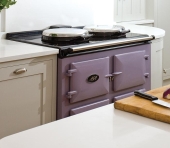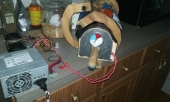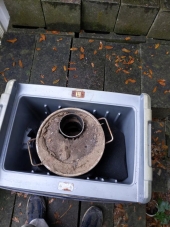
 3
3




Life on a farm is a school of patience; you can't hurry the crops or make an ox in two days.
Henri Alain
 1
1




Argue for your limitations and they are yours forever.




 I now have another way to cook that takes very very low amounts of energy compared to my insta pot.
I now have another way to cook that takes very very low amounts of energy compared to my insta pot.
Life on a farm is a school of patience; you can't hurry the crops or make an ox in two days.
Henri Alain




Mike Barkley wrote:Containing the water inside a mason jar or something similar might help.
>>Space blankets might too.
>>Those things helped my solar oven.
Which solar oven did you use them in? I have a sun oven...
>>So did adding some thermal mass in the form of slate tiles.
What are slate tiles? I have been thinking of adding these to my solar oven, I have tried bolts but they do seem to loose heat quickly.
>>A turkey roasting bag also helped.
Yes this worked well in my cool kit type solar oven.
>>Have you tried an immersion type coffee heater to heat the water?
I like the thought of them but I don't like aluminum as the heater, I might consider it if the heater was stainless steel...
>>I also used solar panels & a charge controller to charge a battery & then used an inverter to run a hot plate.
>> That worked good to.
Life on a farm is a school of patience; you can't hurry the crops or make an ox in two days.
Henri Alain




Argue for your limitations and they are yours forever.




Life on a farm is a school of patience; you can't hurry the crops or make an ox in two days.
Henri Alain




Life on a farm is a school of patience; you can't hurry the crops or make an ox in two days.
Henri Alain




Argue for your limitations and they are yours forever.




Mike Barkley wrote:I would suggest NOT mixing cold water to cool it down. That is wasted energy. Waiting until it cools on it's own seems much more efficient, especially in winter.
Life on a farm is a school of patience; you can't hurry the crops or make an ox in two days.
Henri Alain




letting it cool is wasted energy as you have done nothing with the energy but waited for it to be lost,
Argue for your limitations and they are yours forever.
 1
1




Life on a farm is a school of patience; you can't hurry the crops or make an ox in two days.
Henri Alain




Life on a farm is a school of patience; you can't hurry the crops or make an ox in two days.
Henri Alain




Life on a farm is a school of patience; you can't hurry the crops or make an ox in two days.
Henri Alain




Life on a farm is a school of patience; you can't hurry the crops or make an ox in two days.
Henri Alain

|
Farmers know to never drive a tractor near a honey locust tree. But a tiny ad is okay:
Learn Permaculture through a little hard work
https://wheaton-labs.com/bootcamp
|






